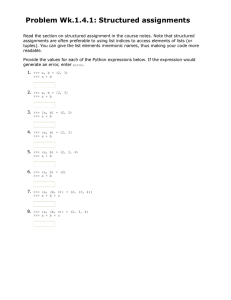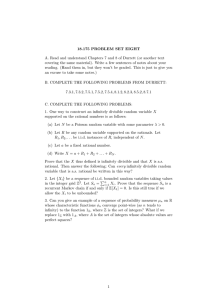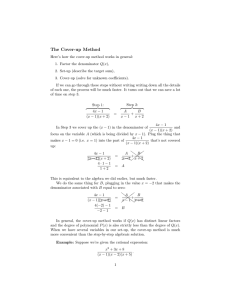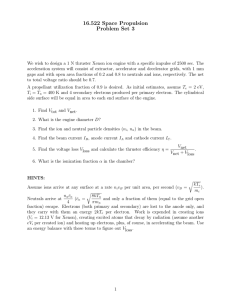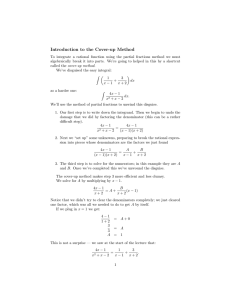Accompanying Notes
advertisement
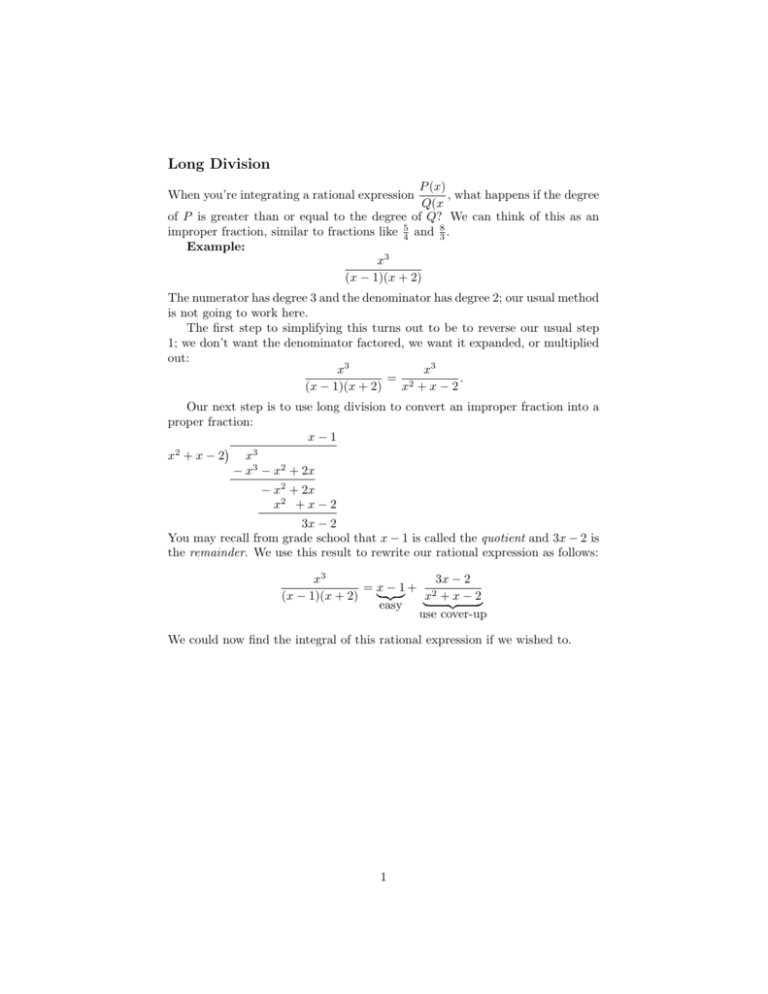
Long Division P (x) , what happens if the degree Q(x of P is greater than or equal to the degree of Q? We can think of this as an improper fraction, similar to fractions like 54 and 83 . Example: x3 (x − 1)(x + 2) When you’re integrating a rational expression The numerator has degree 3 and the denominator has degree 2; our usual method is not going to work here. The first step to simplifying this turns out to be to reverse our usual step 1; we don’t want the denominator factored, we want it expanded, or multiplied out: x3 x3 = 2 . (x − 1)(x + 2) x +x−2 Our next step is to use long division to convert an improper fraction into a proper fraction: x−1 � 2 3 x +x−2 x − x3 − x2 + 2x − x2 + 2x x2 + x − 2 3x − 2 You may recall from grade school that x − 1 is called the quotient and 3x − 2 is the remainder. We use this result to rewrite our rational expression as follows: x3 3x − 2 = x − 1+ 2 (x − 1)(x + 2) � �� � x +x−2 � �� � easy use cover-up We could now find the integral of this rational expression if we wished to. 1 MIT OpenCourseWare http://ocw.mit.edu 18.01SC Single Variable Calculus�� Fall 2010 �� For information about citing these materials or our Terms of Use, visit: http://ocw.mit.edu/terms.
